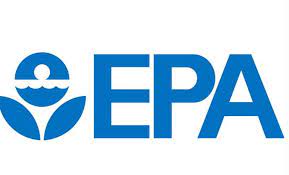The U.S. Environmental Protection Agency (EPA) finalized a rule that improves reporting on per- and polyfluoroalkyl substances (PFAS) to the Toxics Release Inventory (TRI) by eliminating an exemption that allowed facilities to avoid reporting information on PFAS when those chemicals were used in small concentrations. Often referred to as “forever chemicals,” PFAS are used at low concentrations in many products, and as a result of removing this reporting exemption, covered industry sectors such as manufacturing, metal mining, and chemical manufacturing, as well as federal facilities that make or use any of the 189 TRI-listed PFAS, will no longer be able to avoid disclosing the quantities of PFAS they manage or release into the environment.

“People deserve to know if they’re being exposed to PFAS through the air they breathe, the water they drink, or while they’re on the job,” said assistant administrator for the Office of Chemical Safety and Pollution Prevention Michal Freedhoff. “Under this new rule, EPA will receive more comprehensive data on PFAS and looks forward to sharing that data with our partners and the public.”
The rule reflects the Biden-Harris Administration’s commitment to address the impacts of these forever chemicals, and advances EPA’s PFAS Strategic Roadmap to confront the human health and environmental risks of PFAS.
TRI data is reported to EPA annually by facilities in industry sectors such as manufacturing, metal mining, electric power generation, chemical manufacturing and hazardous waste treatment, as well as federal facilities that manufacture, process, or otherwise use notable quantities of TRI-listed chemicals. The data include quantities of chemicals that were released into the environment or otherwise managed as waste.
Information collected through TRI allows communities to learn how facilities in their area are managing listed chemicals. The data collected also help support informed decision-making by companies, government agencies, non-governmental organizations, and the public. Among the updated online TRI tools, communities can use EPA’s TRI Toxics Tracker to map the locations of TRI-reporting facilities and find out about their chemical releases, other chemical waste management practices, and pollution prevention activities.
The 2020 National Defense Authorization Act (NDAA) initially added 172 PFAS to the list of chemicals covered by TRI for the 2021 reporting year and provided a framework to automatically add other PFAS in future years. The NDAA also required facilities to report on those chemicals if they manufacture, process or otherwise use more than 100 pounds of the substance, which is lower than the reporting threshold for most other TRI-listed chemicals. However, the previous administration codified the NDAA provisions in a manner that did not address the availability of the de-minimis exemption or other burden-reduction provisions to the reporting requirement that allowed facilities that report to TRI to disregard and avoid reporting on minimal concentrations of PFAS chemicals.
By designating PFAS as “chemicals of special concern” for TRI-reporting purposes, this rule eliminates the availability of that exemption for TRI-listed PFAS and requires facilities to report on PFAS regardless of their concentration in mixtures, since many PFAS are used in low concentrations in mixtures, and the continued availability of the exemption for PFAS would permit facilities to discount those uses when determining their TRI reporting responsibilities. The rule also makes the previous exemption unavailable for purposes of supplier notification requirements to downstream facilities for all chemicals on the list of chemicals of special concern, which also includes additional chemicals that, like PFAS, remain in the environment for long periods of time and build up in the body like lead, mercury, and dioxins. This change helps ensure that purchasers of mixtures and trade name products containing these chemicals are informed of their presence in mixtures and products they purchase.
The public can view supporting materials in the docket once the rule publishes in the Federal Register. Learn more about the final rule.
 TEXTILES.ORG
TEXTILES.ORG


